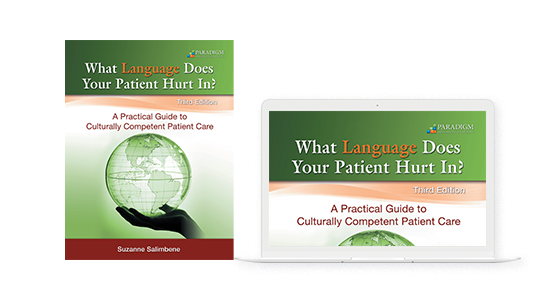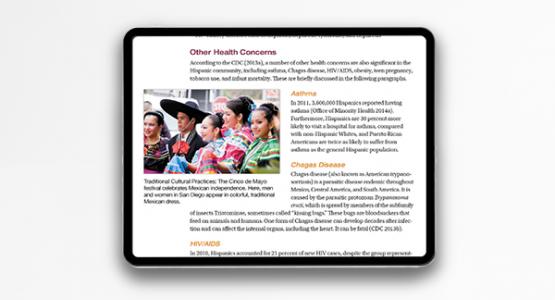
About the Textbook
Copyright: 2017 | Pages: 242
Author: Suzanne Salimbene, PhD
As the population in the United States grows increasingly multicultural, the U.S. patient population and the U.S. health care workforce grow proportionately diverse. In order to deliver high-quality health care to people from a wide variety of cultures, health care workers must become both linguistically and culturally competent.
This third edition of What Language Does Your Patient Hurt In? was written with that goal in mind: to improve health care workers' cultural and linguistic competence. It emphasizes educating oneself in the beliefs and practices of various cultures (including one's own), treating patients with respect as they define it, communicating appropriately to both patients and coworkers, and providing the best possible health care to patients from all cultural backgrounds.
Chapter 1: Cultural and Linguistic Competence in Today's Diverse Healthcare Environment
Chapter 2: Providing Culture-Sensitive Health Care to African Americans
Chapter 3: Providing Culture-Sensitive Health Care to American Indians and Alaska Natives
Chapter 4: Providing Culture-Sensitive Health Care to Patients of Asian Origin
Chapter 5: Providing Culture-Sensitive Health Care to Hispanic and Latino Patients
Chapter 6: Providing Culture-Sensitive Health Care to Patients from the Middle East
Chapter 7: Providing Culture-Sensitive Health Care to Patients from Eastern Europe
Chapter 8: Caring for Members of Religions with Beliefs That Impact Healthcare Decisions
Appendix A: Suggested Answers to Thought and Discussion Questions
Appendix B: Tips for Working in Multicultural Healthcare Environments

Textbook Features
- Photographs depict the cultural and religious practices and settings described in the chapters.
- Colorful illustrations' such as maps and graphs'give life to the information and data presented in the book.
- Tables depict a wealth of detailed data from dozens of sources.
- Pull quotes in Chapter One direct students' attention to key concepts and emphasize what students should keep in mind when proceeding through the book.
- End-of-chapter content includes the following sections:
- Keys to Good Relationships with Patients provides recommendations for health-care students and healthcare workers on how to build good rapport with patients. The information in each list is specific to the groups discussed in that chapter. These lists appear at the end of Chapters 2 through 8.
- Chapter Summary succinctly reinforces the content of the chapter.
- Questions for Thought and Discussion offers assessments through a variety of question types. Some of the questions require you to review chapter content and reflect before responding, whereas other questions describe workplace-based situations you must think through and resolve. Suggested answers to the questions appear in Appendix A.
- Class Activity presents a group project, such as a role-play scenario, a class report on a community research project, or a group activity.

Instructor Support
An Instructor eResources ebook is available for instructors and includes a course-level exam and the Tips from Appendix B as separate, downloadable documents.

